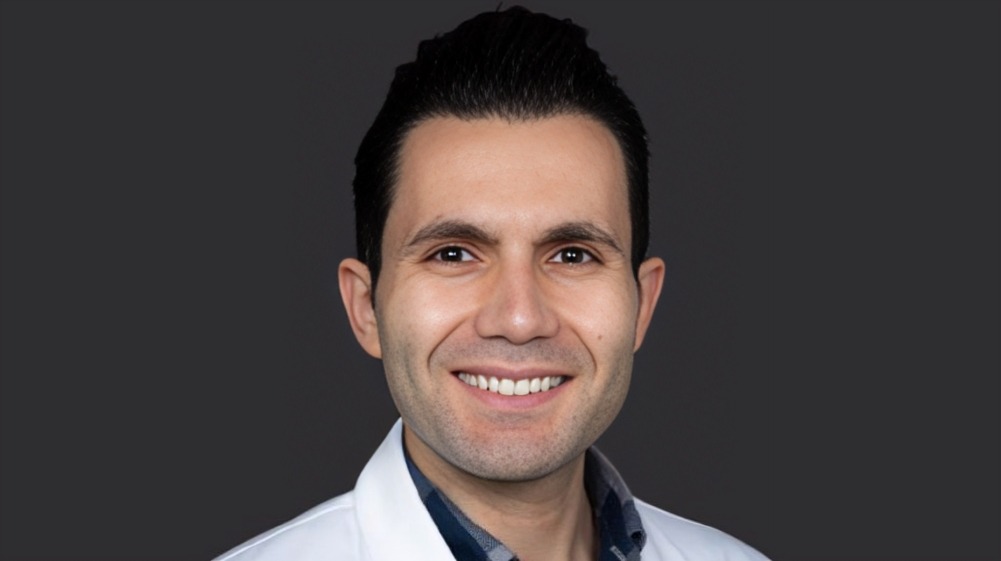
Roupen Odabashian: Review of OpenEvidence AI Scribe
Roupen Odabashian, Hematology/Oncology Fellow at the Karmanos Cancer Institute, shared a post on LinkedIn:
“My review of OpenEvidence AI scribe:
I’ve spent the past year testing AI scribes in real-world oncology workflows. Some are fast. Some are smart. Few feel like they actually understand how we think as clinicians.
Here is my take on OpenEvidence
OpenEvidence: It’s free, widely adopted, and packed with features that go beyond passive note-taking. But it’s not without its quirks.
Here’s my honest take after using it in a busy hematology-oncology setting:
What works well:
1- Context awareness: You can upload transcripts, documents, or paste text—and it actually understands acronyms like FOLFOX or CHOP. That’s a big win in oncology.
2- Instant clinical decision support: Just highlight a sentence, and it offers guideline-based suggestions or flags missing steps. No extra clicks. No switching tabs.
3- Evidence insertion: You can ask it to pull patient quotes from the transcript to support your note. It’s fast, accurate, and makes documentation feel more real.
4- Error flagging: It acts like a second set of eyes, catching things you might’ve missed, like labs you forgot to order or non-pharmacologic options worth discussing.
But…
What still needs work:
1- Speed: When you’re rounding or in clinic, every second counts. OpenEvidence can lag—especially when using advanced features. Once you move on to the next patient, it’s hard to go back.
2- Writing style: Notes often sound robotic. You can’t choose between detailed or brief formats, and it doesn’t reflect how we naturally communicate.
Bottom line: OpenEvidence isn’t just a clinical decision support only; now, it’s trying to be a clinical AI scribe with an ambient clinical decision support system.
And that’s exciting. But speed, personalization, and template control still need serious attention.
This review is unsponsored and based on my own experience.
I care deeply about how these tools evolve, because they’re shaping the future of how we learn, document, and deliver care
As a practicing oncologist, I’ve spent the past year exploring how AI scribes can support clinical documentation and decision-making in real-world settings. This article reflects my personal experience using OpenEvidencein a busy hematology-oncology workflow. It is not sponsored, and all opinions shared here are entirely my own.
My goal is to offer a candid, clinician-centred perspective on what works, what doesn’t, and where these technologies still need to evolve to truly meet the needs of physicians and patients.
Review of OpenEvidence AI scribe
The Pros
1- It’s Free:
Many physicians use OpenEvidence as a clinical decision support tool. By offering the tool for free, OpenEvidence has seen rapid adoption, reportedly being used by over 40% of U.S. physicians. This approach allows them to bypass the typically long sales cycles in healthcare and build a large user base quickly. Instead of charging users directly, the company monetizes its platform through advertisements from pharmaceuticals. By achieving such widespread use, they have already established a significant distribution network, which is a major advantage
2- Context awareness
Context awareness is non-negotiable. When you walk into a room and the AI scribe doesn’t understand what you’re talking about—or lacks the clinical context—it can completely derail documentation. This is especially true in hematology and oncology, where we rely heavily on complex acronyms like FOLFOX, CHOP, or AC-TC. Each letter represents a specific chemotherapy agent, and if the AI isn’t trained to recognize these regimens, the output won’t be accurate or clinically useful. You can upload different types of documents or images, and you can copy and paste text. See the image above. You can upload patient-related documents or paste text, and the AI will read and classify them under different categories.
3- Cool Features:
Instant clinical decision support (CDS) is a game changer:
You don’t need to copy-paste between windows or manually prompt the system. Just highlight the relevant text, and a contextual menu appears with tailored options—whether it’s summarizing, referencing guidelines, or flagging potential issues. It’s fast, intuitive, and designed to keep your workflow uninterrupted. I usually juggle between AI Scribe and Open Evidence, but now you can have both in the same window.
Highlights the transcript that reflects the note:
One of the cool things is you can highlight a part of the text, and you can ask OpenEvidence to insert the evidence from the transcript using your words or the patient’s words to support that part of the clinical notes, whether it’s part of the HPI or impression plan.
Real-world example: In one case, a patient presented with bone pain. When I asked OpenEvidence to show supporting evidence, it automatically pulled in the relevant portion of the transcript—specifically, the patient’s description of their symptoms. This kind of contextual insertion is incredibly useful. It not only saves time but also ensures that the note reflects the actual clinical conversation, reinforcing the accuracy and defensibility of the documentation
Flag your errors!
OpenEvidence isn’t just clinical decision support, it’s your second set of eyes. Think of it as the colleague who reviews your plan and points out what’s missing. It goes beyond passive documentation and becomes an active tool for continuous learning. By double-checking your clinical decisions and flagging potential gaps, OpenEvidence helps reinforce best practices and reduce oversight. This kind of real-time feedback loop not only enhances physician education but also directly contributes to patient safety. For example, it might suggest doing blood work you have missed or a non pharmacological treatment you could talk about with the patient.
Review of OpenEvidence AI scribe
The Cons and Areas for Improvement
1- Time! Time! Time!
Performance matters, especially in a fast-paced clinical setting. This tool has been a major step forward for me. I tested it head-to-head against other AI scribes I regularly use. While the note-writing pace is acceptable, it’s still slower than some competitors.
The real bottleneck comes when you ask a question about your note or try to use any of the advanced features; response times can be noticeably long. For example, when I am rounding on inpatient or even in the clinic I have to make a desicion and move on to the next patient because o boy, things can be very hectic. I can’t wait for OpenEvidence to read the text and find the erorrs or the appropraite guidines because once you move to the next patient you have other issues to deal with and it’s hard to go back sometimes and one might forget!
If the system lags, it’s easy to lose momentum. I hope future updates will improve responsiveness, because the potential here is enormous.
2- writing style
Limited control over writing style: One of the key limitations is the lack of personalization in how notes are generated. You can’t choose between a detailed or brief format, so by default, the notes tend to be concise, often too. I like it when I can have more detailed notes to explain the conversation and the rationale I had when choosing a treatment.
This lack of flexibility makes it harder to tailor documentation to your specialty or personal preferences. For clinicians who prefer more narrative depth or structured detail, this can be a real constraint.
3- Template adaptation is still limited
One of the ongoing challenges I’ve encountered is that the underlying language model struggles to consistently follow the custom templates I’ve built. For instance, if I ask it to summarize the patient’s transcript, the investigations ordered, and my clinical reasoning under a single “Impression and Plan,” it often breaks that into three separate bullet points and adds some extra padding. It wraps simple statements in redundant or overly structured language. It sounds really robotic to me!
For my other reviews on AI scribes:
Our article on Abridge review
Our video on Abridge
Our article on Nabla Review
Our video on Nabla Review
Our article on Scribeberry Review
Our video on Heidi Health.”
More posts featuring Roupen Odabashian on OncoDaily.
-
Challenging the Status Quo in Colorectal Cancer 2024
December 6-8, 2024
-
ESMO 2024 Congress
September 13-17, 2024
-
ASCO Annual Meeting
May 30 - June 4, 2024
-
Yvonne Award 2024
May 31, 2024
-
OncoThon 2024, Online
Feb. 15, 2024
-
Global Summit on War & Cancer 2023, Online
Dec. 14-16, 2023
